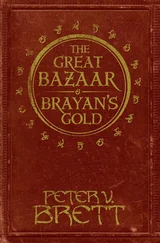It might be a good idea to have an active profiler—to push performance data to the programmer instead of waiting for him to ask for it. For example, the editor could display bottlenecks in red when the programmer edits the source code.
Another approach would be to somehow represent what's happening in running programs. This would be an especially big win in server-based applications, where you have lots of running programs to look at. An active profiler could show graphically what's happening in memory as a program's running, or even make sounds that tell what's happening.
Sound is a good cue to problems. At Viaweb we had a big board of dials showing what was happening to our web servers. The hands were moved by little servomotors that made a slight noise when they turned. I couldn't see the board from my desk, but I found that I could tell immediately, by the sound, when there was a problem with a server.
It might even be possible to write a profiler that would automatically detect inefficient algorithms. I would not be surprised if certain patterns of memory access turned out to be sure signs of bad algorithms. If there were a little guy running around inside the computer executing our programs, he would probably have as long and plaintive a tale to tell about his job as a federal government employee. I often have a feeling that I'm sending the processor on a lot of wild goose chases, but I've never had a good way to look at what it's doing.
A number of languages now compile into byte code, which is then executed by an interpreter. This is usually done to make the implementation easier to port, but it could be a useful language feature. It might be a good idea to make the byte code an official part of the language, and to allow programmers to use inline byte code in bottlenecks. Then such optimizations would be portable too.
The nature of speed, as perceived by the end user, may be changing. With the rise of server-based applications, more and more programs may turn out to be I/O-bound. It will be worth making I/O fast. The language can help with straight forward measures like simple, fast, formatted output functions, and also with deep structural changes like caching and persistent objects.
Users are interested in response time. But another kind of efficiency will be increasingly important: the number of simultaneous users you can support per processor. Many of the interesting applications written in the future will be server-based, and the number of users per server is the critical question for anyone hosting such applications. In the capital cost of a business offering a server-based application, this is the divisor.
For years, efficiency hasn't mattered much inmost end-user applications. Developers have been able to assume that users would have increasingly fast processors sitting on their desks. And Parkinson's Law has proven as powerful as Moore's. Software has bloated to consume the resources available. That will change with server-based applications, because hardware and software will be supplied together. For companies that offer server-based applications, it will make a big difference to the bottom line how many users they can support per server.
In some applications, the processor will be the limiting factor, and execution speed will be the most important thing to optimize. But often memory will be the limit; the number of simultaneous users will be determined by the amount of memory you need for each user's data. The language can help here too. Good support for threads will enable all the users to share a single heap. It may also help to have persistent objects and/or language-level support for lazy loading.
14.8. Time
The last ingredient a popular language needs is time. No one wants to write programs in a language that might go away, as so many programming languages do. So most hackers will tend to wait until a language has been around for a couple years before even considering it.
Inventors of wonderful new things are often surprised to discover this, but you need time to get any message through to people. A friend of mine rarely does anything the first time someone asks him. He knows that people sometimes ask for things they turn out not to want. To avoid wasting his time, he waits till the third or fourth time he's asked to do something. By then whoever's asking him may be fairly annoyed, but at least they probably really do want whatever they're asking for.
Most people have learned to do a similar sort of filtering on new things they hear about. They don't even start paying attention until they've heard about something ten times. They're perfectly justified: the majority of hot new whatevers do turn out to be a waste of time, and eventually go away. By delaying learning VRML, I avoided having to learn it at all.
So anyone who invents something new has to expect to keep repeating their message for years before people will start to get it. It took us years to get it through to people that Viaweb's software didn't have to be downloaded. The good news is, simple repetition solves the problem. All you have to do is keep telling your story, and eventually people will start to hear. It's not when people notice you're there that they pay attention; it's when they notice you're still there.
It's just as well that it usually takes a while to gain momentum. Most technologies evolve a good deal even after they're first launched — programming languages especially. Nothing could be better for a new technology than a few years of being used only by a small number of early adopters. Early adopters are sophisticated and demanding, and quickly flush out whatever flaws remain in your technology. When you only have a few users you can be in close contact with all of them. And early adopters are forgiving when you improve your system, even if this causes some breakage.
There are two ways new technology gets introduced: the organic growth method, and the big bang method. The organic growth method is exemplified by the classic seat-of-the-pants underfunded garage startup. A couple guys, working in obscurity, develop some new technology. They launch it with no marketing and initially have only a few (fanatically devoted) users. They continue to improve the technology, and meanwhile their user base grows by word of mouth. Before they know it, they're big.
The other approach, the big bang method, is exemplified by the VC-backed, heavily marketed startup. They rush to develop a product, launch it with great publicity, and immediately (they hope) have a large user base.
Generally, the garage guys envy the big bang guys. The big bang guys are smooth and confident and respected by the VCs. They can afford the best of everything, and the PR campaign surrounding the launch has the side effect of making them celebrities. The organic growth guys, sitting in their garage, feel poor and unloved. And yet I think they are often mistaken to feel sorry for themselves. Organic growth seems to yield better technology and richer founders than the big bang method. If you look at the dominant technologies today, you'll find that most of them grew organically.
This pattern doesn't only apply to companies. You see it in research too. Multics and Ada were big-bang projects, and Unix and C were organic growth projects.
14.9. Redesign
"The best writing is rewriting," wrote E. B. White. Every good writer knows this, and it's true for software too. The most important part of design is redesign. Programming languages, especially, don't get redesigned enough.
To write good software you must simultaneously keep two opposing ideas in your head. You need the young hacker's naive faith in his abilities, and at the same time the veteran's skepticism. You have to be able to think how hard can it be ? with one half of your brain while thinking it will never work with the other.
Читать дальше












